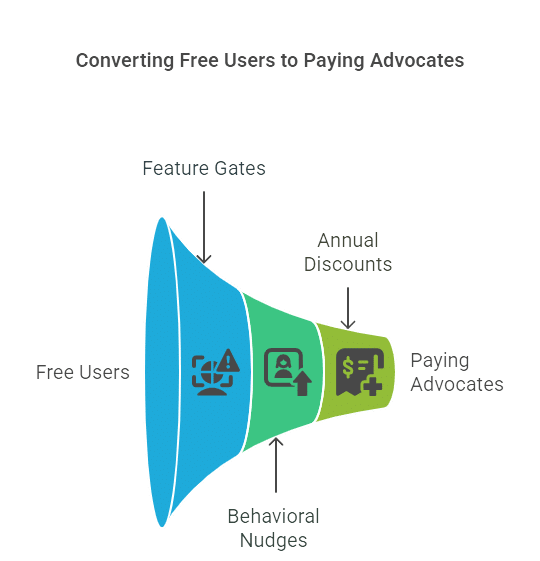Dynamic Pricing Mastery: Unlocking Explosive SaaS Growth Through Strategic Monetization
Imagine this: Two SaaS startups launch identical products. One clings to rigid, outdated pricing, while the other adapts its rates based on customer behavior and market trends. Within a year, the agile company outpaces its competitor by 40% in revenue. In today’s SaaS arena, dynamic pricing isn’t a luxury but it’s the linchpin of sustainable growth. This article reveals how to harness AI, behavioral insights, and tiered value delivery to transform your pricing strategy from a static menu into a revenue-generating powerhouse.
The High Cost of Static Pricing in a Dynamic Market

Traditional “set-and-forget” pricing models are crumbling under modern demands. Consider these pitfalls:
- Revenue Leakage: Bundling high-value features into cheap tiers leaves millions on the table.
- Customer Alienation: 73% of B2B buyers demand pricing flexibility tailored to their needs (Gartner).
- Competitive Blind Spots: Fixed rates can’t counter rivals’ flash sales or regional discounts.
Real-World Impact: A CRM startup lost 22% of its enterprise clients after refusing to adopt usage-based pricing—proof that inflexibility drives churn.
Four Data-Backed Dynamic Pricing Strategies to Skyrocket SaaS Revenue

1. Value-Based Tiering: Price What Your Customers Actually Value
Forget arbitrary tiers. Align pricing with measurable outcomes:
- Feature-Led Tiers
- Basic: Core functionalities (e.g., task management).
- Premium: Advanced analytics, API access.
- Enterprise: Custom SLAs, dedicated support.
- Usage-Based Models
- Charge for active users, API calls, or storage.
- Outcome-Driven Pricing
- Tie fees to client success metrics (e.g., revenue uplift from your tool).
Case Study: A cybersecurity SaaS boosted ARR by $2.5M in 6 months by introducing “pay-per-threat-detected” pricing for SMBs.
2. AI-Powered Pricing: Let Algorithms Do the Heavy Lifting
Machine learning isn’t just for chatbots. Deploy AI to:
- Predict churn risks and trigger retention discounts.
- Adjust prices in real-time based on competitor moves (e.g., a rival’s Black Friday sale).
- Analyze historical data to identify under-monetized features.
Tools to Try: Pros uses AI to recommend optimal prices, while Pricefx automates global rate adjustments.
3. Hyper-Localized Pricing: Win Global Markets Without Cannibalizing Value
One price doesn’t fit all. Adapt to regional nuances:
- Geofenced Discounts: Offer lower rates in price-sensitive markets like India or Brazil.
- Currency Localization: Display prices in euros for EU clients, pesos for LatAm.
- Regulatory Adjustments: Factor in VAT, GDPR fines, or data laws into pricing.
Pro Tip: Use Paddle to automate tax compliance and multi-currency billing, reducing checkout friction by 31%.
4. Freemium Funnels: Turn Free Users into Paying Advocates
Freemium isn’t dead—it’s evolving. Convert users with surgical precision:
- Feature Gates: Reserve AI insights or custom dashboards for paid tiers.
- Behavioral Nudges: Use in-app prompts like, “Teams who upgrade see 50% faster results!”
- Annual Discounts: Offer “20% off for yearly billing” to boost LTV.
Slack’s Success: By limiting message history in free plans, Slack converted 30% of freelancers into paying users within 90 days.
Tools to Execute Flawlessly (Without Blowing Your Budget)
- Chargebee: A/B test pricing tiers and track MRR/churn in real-time.
- ProfitWell: Slash involuntary churn with automated dunning workflows.
- Gainsight: Monitor customer health scores to pinpoint upsell opportunities.
The Dark Side of Poor Pricing: Risks You Can’t Ignore
Mispricing isn’t just a revenue hiccup—it’s existential:
- Brand Erosion: 61% of buyers lose trust after hidden fees.
- Compliance Nightmares: GDPR fines can hit €20M or 4% of global revenue.
- Margin Meltdowns: Over-discounting shrinks profits; under-pricing undervalues innovation.
Cautionary Tale: A project management tool faced a 15% user exodus after springing surprise costs for “premium” integrations.

Future-Proof Your Strategy: 3 Steps to Stay Ahead
- Audit Quarterly: Align pricing with shifting market trends and customer feedback.
- Leverage Behavioral Data: Track which features drive upgrades (e.g., users who export data daily are 3x likelier to pay).
- Test Fearlessly: Run limited-time offers (e.g., “Summer Sprint Discounts”) to validate new models risk-free.
Conclusion: Pricing as Your Secret Growth Weapon
Dynamic pricing isn’t about chasing trends—it’s about building a monetization engine that evolves with your market. By blending AI insights, hyper-localized tactics, and tiered value, SaaS companies can turn pricing into a competitive moat. Remember: In a world where 68% of buyers prioritize flexible pricing (Forrester), stagnation is the real risk.
Ready to revolutionize your revenue? Start small—test one strategy from this guide—and watch scalability follow.
